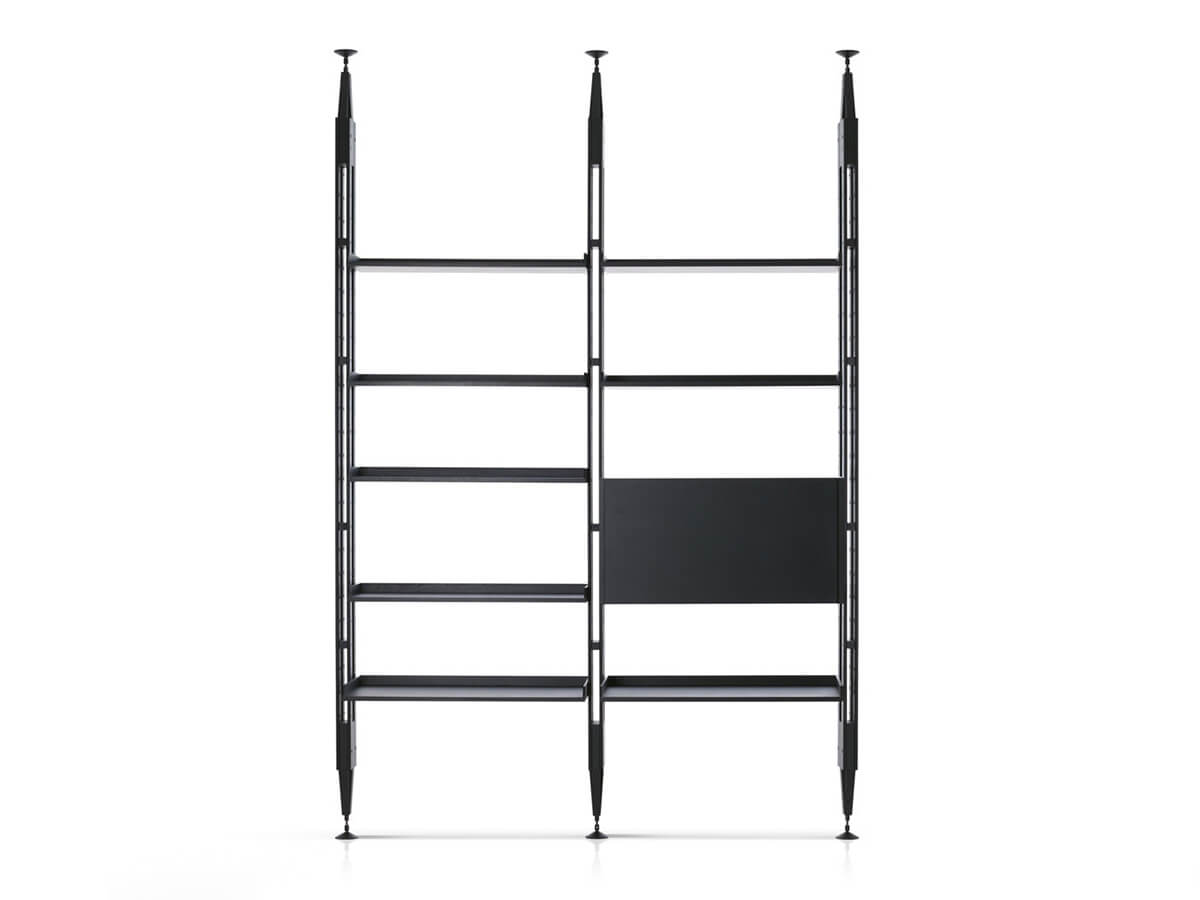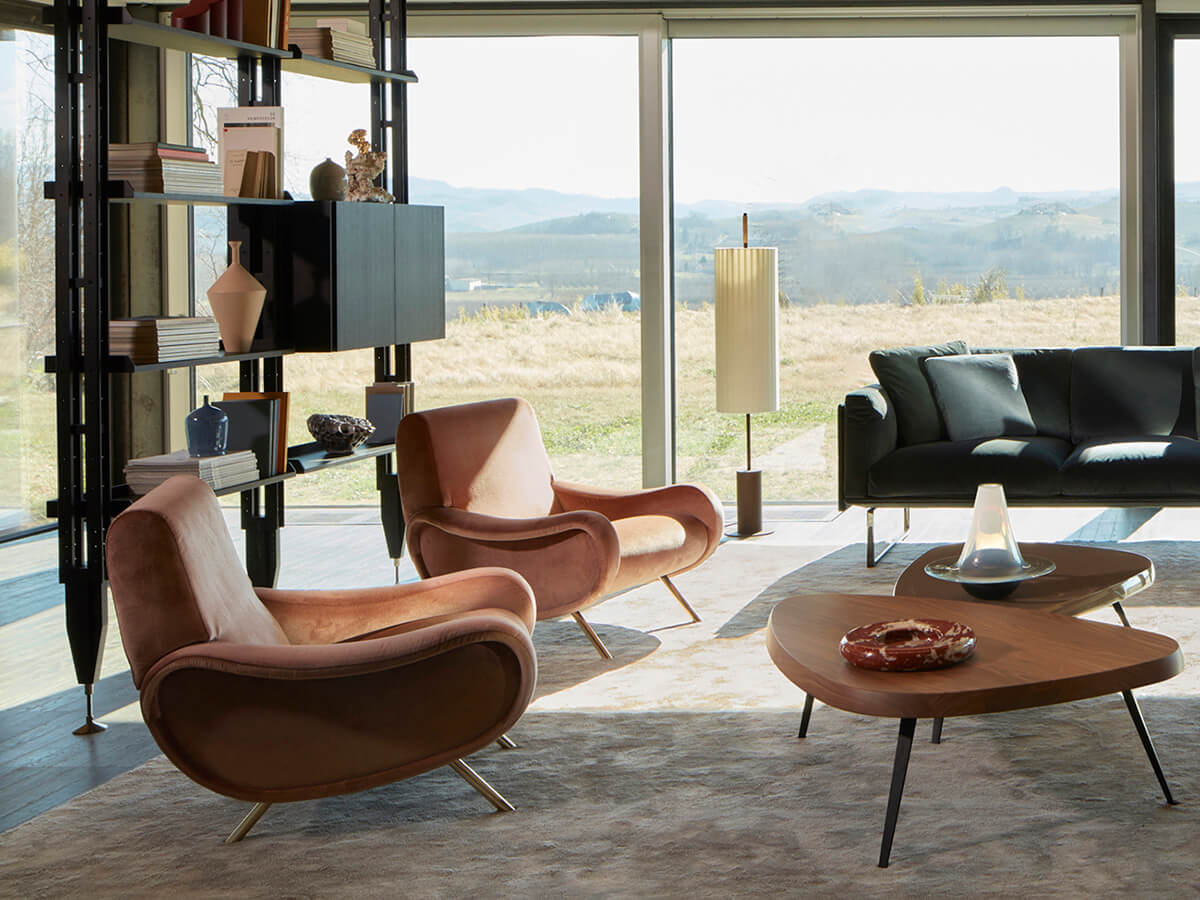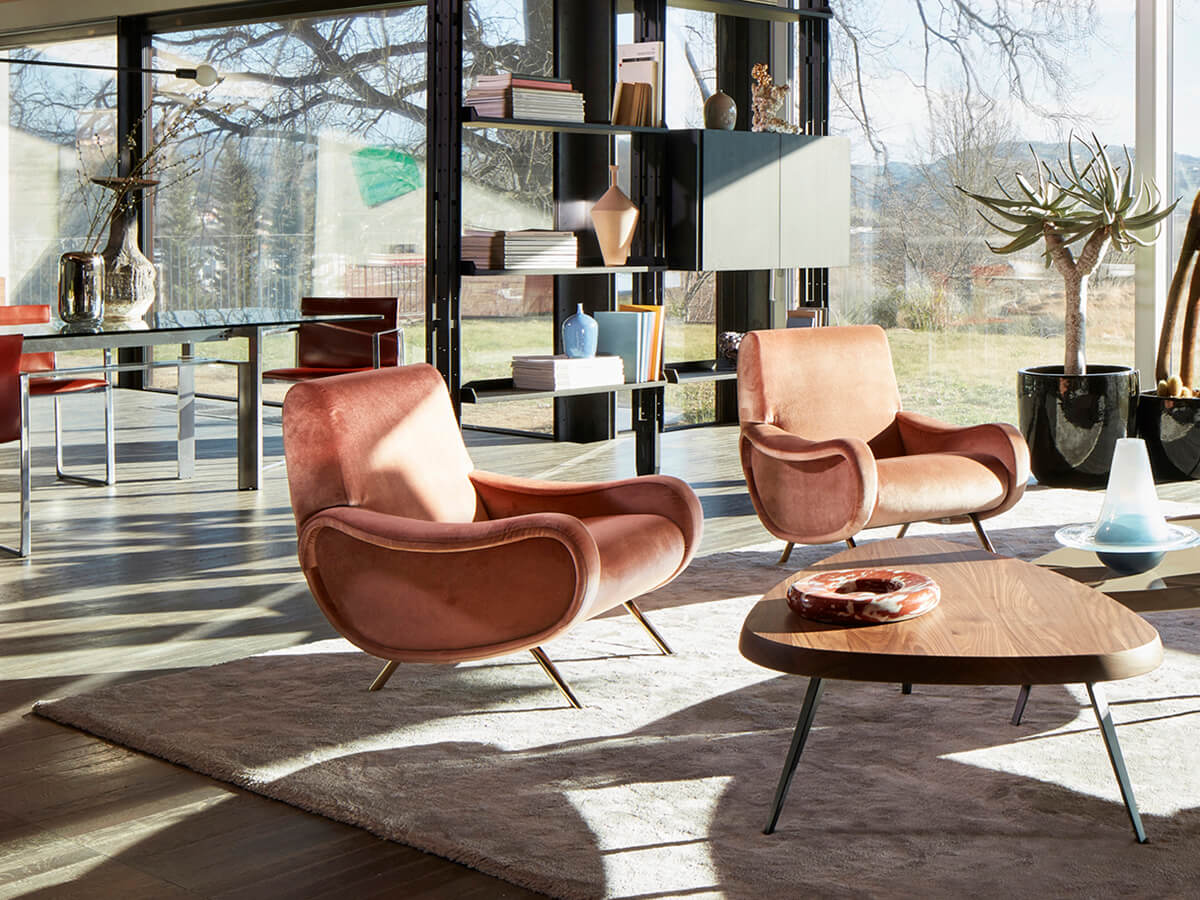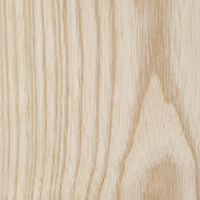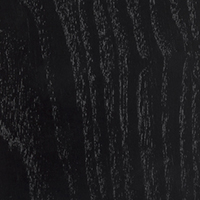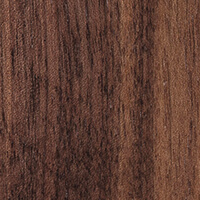Cassina
Infinito Bookshelf
Version with 2 Modules
Price starting from € 15.074,00*
*Price valid for the version in natural ashwood composed by n. 03 stirrups, n. 08 shelves D.25 cm and n. 01 unit with flap door (3 x cod. 835 11 + 8 x 835 13 + 835 15).
Suggested versions (2)
Personalize your request
Finishing
Select
Storage Unit
Select
Shelves Depth
Select
Founded in 1927 by the brothers Cesare and Umberto in the heart of Brianza furniture, Cassina is one of the long-lived Made in Italy industrial design companies. From the early ‘30s, Cassina brothers identified the strong demand for home furnishings and interpreted in a far-sighted way the renewed taste of the new emerging classes. From this intuition, Cassina started a real revolution in the indoor furnishings design. Since then, the company has been pursuing a path of research and innovation, involving prestigious designers and architects in the study of new furnishings models. In the last few years the collaboration with Gio Ponti has begun. Thanks to this partnership were born the 646 chair, known as Leggera, and the subsequent model 699 or Superleggera.Read more
Designed by
Franco Albini
Franco Albini (1905-1977) was one of the great masters of Italian Rationalism, both in the field of design and architecture. Since the 1930s he distinguished himself as one of the leading elements of the group of young architects who, gathered around the Casabella magazine, advocated the peculiar Italian interpretation of the Modern Movement and the Bauhaus that were forever changing European and world architecture, and which took the name of Rationalism in Italy. Putting functional values at the center, his creations did not try to hide the constructive elements, but rather emphasized them and put them in the foreground. After the war he began to collaborate with Franca Helg and intensified his theoretical and teaching activity, centered on the search for a synthesis between artisan tradition and industrial practice. As a designer he has worked with various realities such as Cassina, Arflex, Poggi and Bonacina; his creations are also re-edited by brands such as Knoll and Nemo. Among the major legacies of his work as an architect are the planning of Line 1 of the Milan Metro, in collaboration with Bob Noorda for the graphics, and the Rinascente building in Rome. Most of his post-war projects were co-signed with Franca Helg (1920-1989), who will carry on the activity of Studio Albini even after the death of its founder.Read more
